Whether you’re nurturing your very first succulent or tending to a lush indoor jungle, the right tools can make all the difference in your plant care journey. Embracing the world of indoor gardening opens up a realm of tranquility and growth, allowing you to bring nature’s beauty into your home, but you need the perfect toolkit to help your green companions thrive.
For both seasoned plant enthusiasts and those just dipping their toes into the soil, the essentials of indoor gardening may seem daunting at first. However, with the right guidance and tools, you’ll find that nurturing your indoor plants is not only manageable but immensely rewarding.
In this article, we’ll explore the must-have tools that every indoor gardener should consider adding to their collection. From the most basic necessities to a few specialized items for the more ambitious gardener, we’re here to equip you with the knowledge needed to cultivate a flourishing indoor oasis.
Choosing the Best Watering Tools
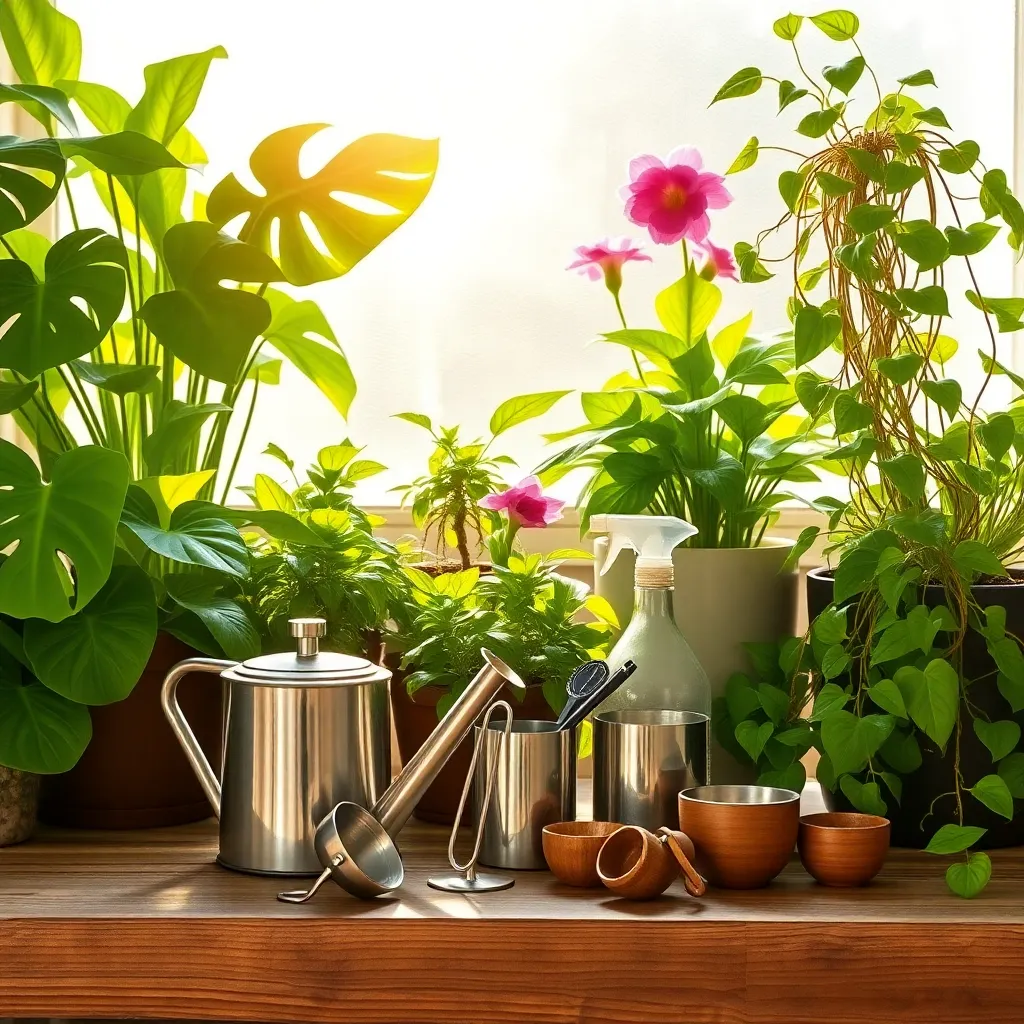
Watering tools are essential for indoor plant care as they help maintain the right moisture levels in the soil. For beginners, a simple watering can with a narrow spout is ideal to ensure water reaches the plant’s roots without splashing onto the leaves.
Advanced gardeners might consider investing in a self-watering system to provide consistent moisture for plants that require it. These systems can be particularly beneficial for moisture-loving plants like ferns or peace lilies, which thrive in consistently damp conditions.
When choosing a watering can, ensure it has a comfortable grip and an appropriate capacity for your collection size. Larger indoor gardens may benefit from a 2-gallon can, while smaller setups can use a 1-gallon size to avoid overwatering.
Additional tools like moisture meters can be invaluable for determining when your plants truly need water. These devices help prevent the common mistake of overwatering by providing a clear indication of the soil’s current moisture level.
Pruning Scissors for Indoor Plants
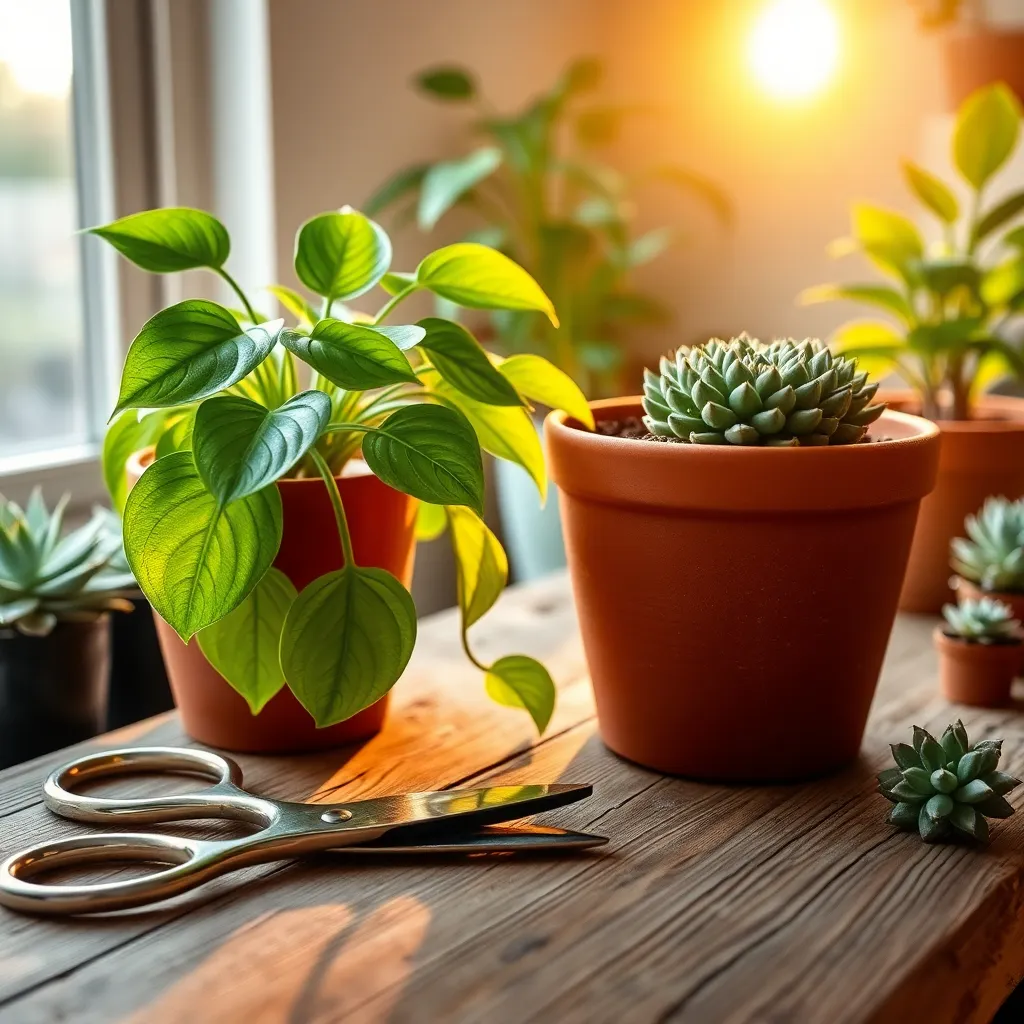
Pruning scissors are a must-have tool for maintaining the health and appearance of your indoor plants. Proper pruning encourages growth and prevents overcrowding, which can lead to poor air circulation and increased susceptibility to pests.
When selecting pruning scissors, opt for a pair that is sharp and easy to handle. Stainless steel blades are ideal because they resist rust and maintain their sharpness over time, ensuring clean cuts that promote healthy healing.
For beginners, it’s important to remember to prune your plants during their active growth periods, typically in spring and summer. This timing allows the plant to recover quickly and encourages new growth.
Advanced gardeners might consider using bypass pruning scissors for more precise cuts, especially on thicker stems. These scissors work like a pair of scissors, with two blades that pass by each other to make a clean cut without crushing the plant tissue.
Ideal Pots and Containers
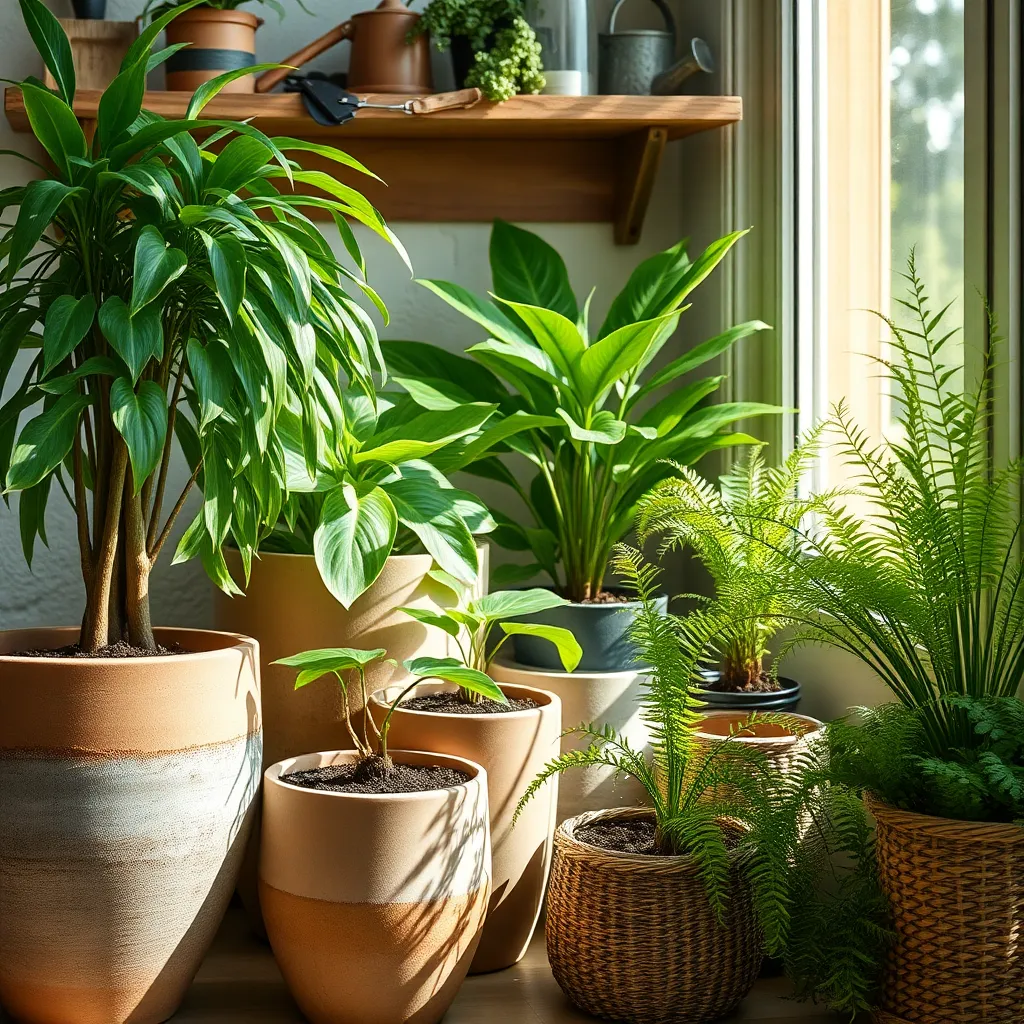
Choosing the right pots and containers is crucial for the success of your indoor plants. Ensure your pots have drainage holes to prevent root rot, which is vital for the health of most indoor plants.
When selecting a pot, consider the size of the plant at maturity to avoid frequent repotting. A pot that is too large can lead to overwatering, while a pot that is too small can restrict root growth.
For beginners, opting for terracotta or ceramic pots can be beneficial as they allow the soil to dry out more evenly than plastic pots. These materials offer a classic look and help maintain proper moisture levels.
Experienced gardeners might experiment with self-watering pots, which can help maintain consistent moisture levels and reduce the frequency of watering. These pots are especially useful for plants that thrive in consistently moist soil, such as peace lilies or ferns.
Soil Mix Essentials for Growth
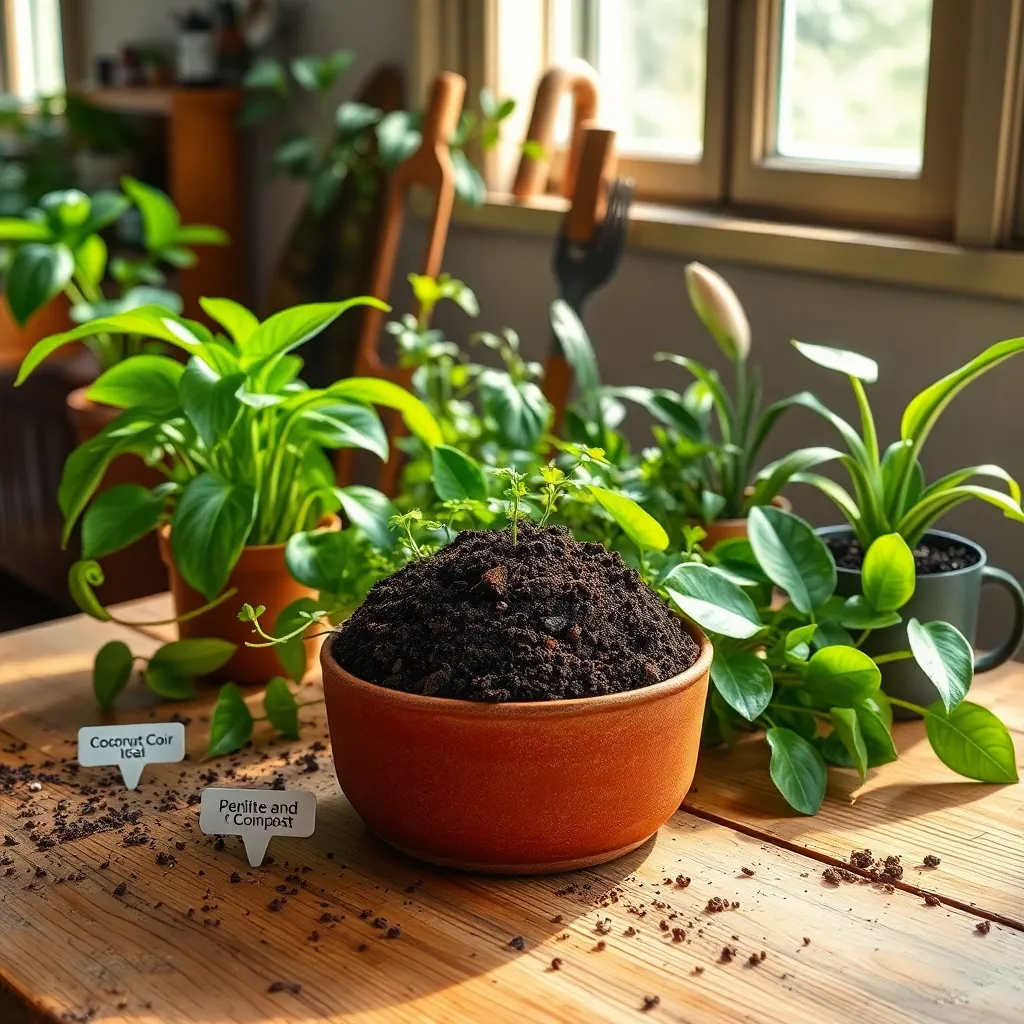
Choosing the right soil mix is crucial for the healthy growth of your indoor plants. A well-balanced soil mix provides the necessary nutrients, aeration, and drainage, which are essential for plant roots to thrive.
For most indoor plants, a general-purpose potting mix will suffice, but customization can enhance growth. Consider adding perlite or sand to improve drainage, especially for plants like succulents that prefer drier conditions.
Understanding the specific needs of your plant can guide you in selecting the best soil mix. For instance, African violets thrive in a mix that’s slightly acidic and rich in organic matter, while orchids require a bark-based medium for optimal growth.
Advanced gardeners might experiment with creating their own soil mixes for tailored plant care. Mixing equal parts of peat moss, compost, and vermiculite can create a balanced medium that retains moisture while promoting aeration.
Lighting Solutions for Healthy Plants
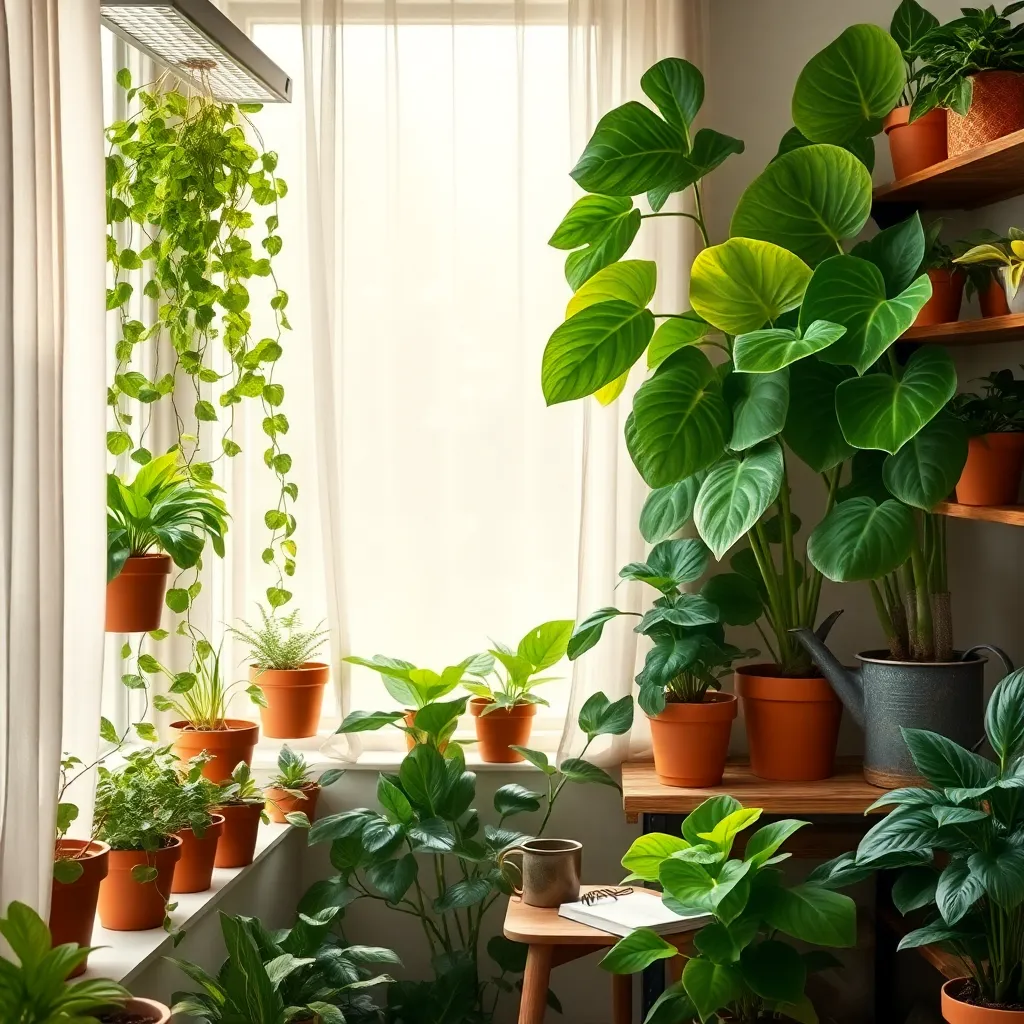
Providing the right lighting is essential for indoor plant health and vigor. Natural sunlight is ideal, but when it’s insufficient, artificial lighting solutions can be highly effective.
Consider using LED grow lights for their energy efficiency and full-spectrum capabilities, which mimic natural sunlight. These lights should be placed about 6 to 12 inches above the plants, depending on the type and growth stage.
For beginners, it’s important to understand the light requirements of your plants. Low-light plants like snake plants or peace lilies thrive with minimal light, whereas succulents and cacti prefer bright, direct light.
Advanced gardeners might invest in a timer system to automate light exposure, ensuring plants receive consistent cycles of light and darkness. This simulates natural day-night rhythms, promoting healthier growth and stronger blooms.
Conclusion: Growing Success with These Plants
In nurturing the delicate relationship between you and your indoor plants, five essential tools emerge as game-changers: a moisture meter to ensure your plants are never left parched, pruning shears to foster healthy growth, a watering can with a long spout for precision care, grow lights to simulate sunlight, and a quality potting mix to provide the ideal foundation. These tools not only aid in plant care but also strengthen the bond you share with your leafy companions.
To take immediate action, start by assessing your current plant care setup and identify which of these tools you might be missing. Begin with one—perhaps the moisture meter—and notice the difference it makes in your plant’s vitality.
To ensure your plants thrive, save or bookmark this article as a handy reference guide in your plant care journey. By taking these steps, you’re investing in a healthier, more vibrant indoor garden and, in turn, fostering a nurturing environment that reflects positively on all your relationships. Remember, just as with plants, relationships flourish with the right tools and care. Here’s to your future success, as you cultivate both your indoor garden and the relationships that matter most.
